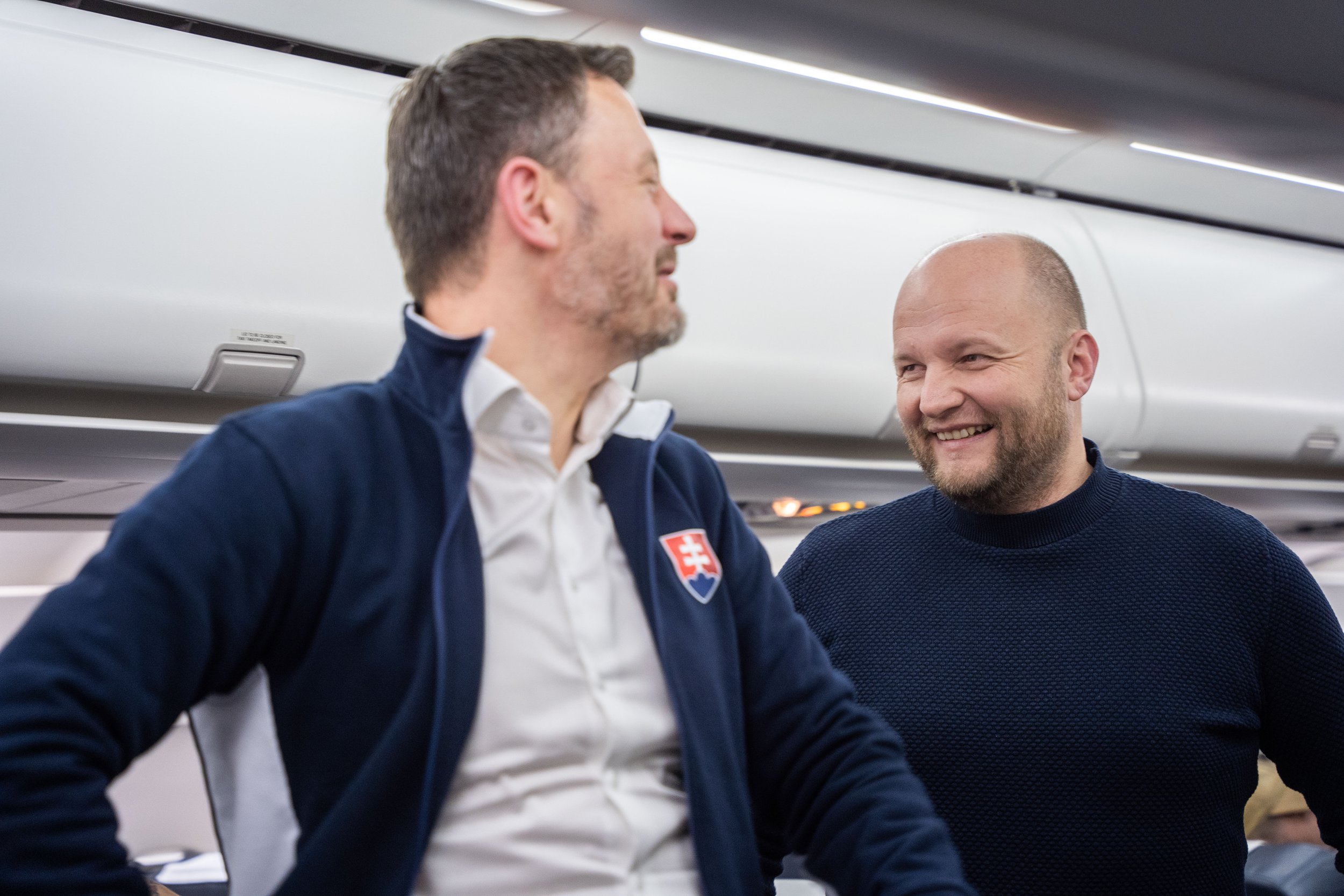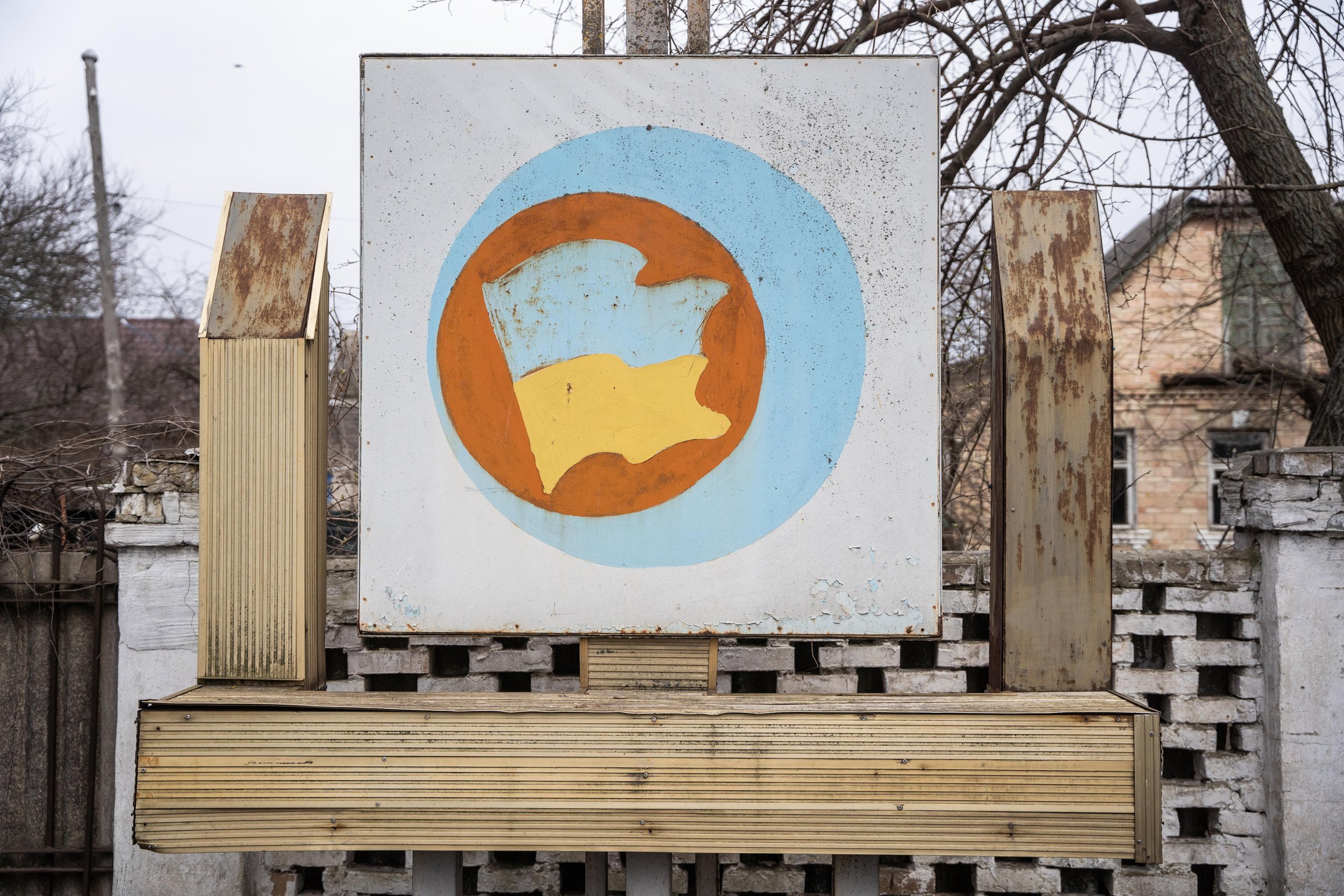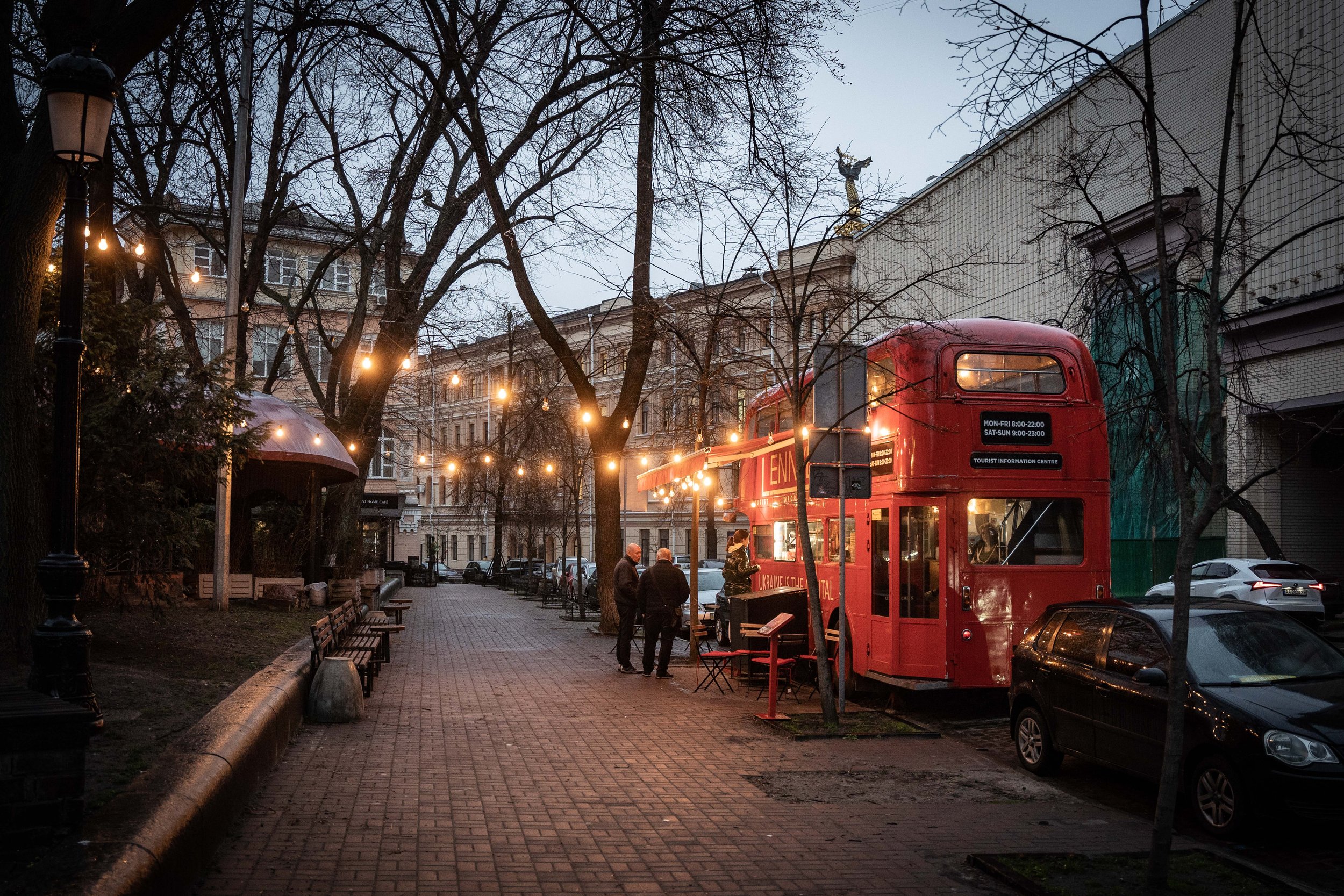Crowd said Heróyam Sláva! after Zelensky's Speech. Chills overwhelmed my Body
When my colleague asked me whether I want to travel to Kyiv I immediately responded yes. Two days later, we were on board the plane belonging to the Slovak government.
Since the Russian war against Ukraine started over a year ago, I felt really bad I am not there reporting. I think this emotion has several sources. For one, I simply felt that all the reporting I did at home was less important than what war reporters were doing and I simply wanted to do something that could help the Ukrainian people fight the enemy - for which the mobilization of the global public through photography is crucial. The other motivation was probably a bit selfish. I work as a journalist partly because I like to watch history from the front row and I am super curious.
And even know I feel that I probably cannot bring home better war photographs than the guys from New York Times capturing frames in the front line, I wanted to be there. Traveling with the delegation of Slovak prime minister Eduard Heger and the minister of defense Jaroslav Naď was the best way to dip my toes into the situation, as it’s probably the safest way to travel to a war country. I still don’t have experience with war reporting and my colleagues that champion this discipline will probably still hesitate to bring me on board for the real deal, but I have gained some confidence to build on.
We boarded the plane in Bratislava on Thursday morning and then spent a day in Košice waiting for the PM to run his errands. Even though Košice is my hometown, I didn’t go home and spent my day in cafes instead. I didn’t want my mom to know where I am traveling, so she wouldn’t worry. We’ve gone through security at the Košice airport, some with bags full of beer, and boarded the plane flying to Rzeszów, Poland. After a super short flight, we regrouped into vans and small buses and headed to the train station in Przemyśl. This was the first time in my life I traveled in a column chaperoned by cop cars.
The train was prepared just for the Croatian and Slovenian government officials and us. It was a sleeping train that could host four people per coupe and with all the cameras and bags it was pretty packed in there. We photographed the politicians on the train but had big problems getting our images and story to our editors. My phone provider didn’t have a Ukraine internet data package so we had to rely on our good colleagues from a competition newspaper, whom we have truly befriended. They were nice enough to share their unlimited internet package, but in the middle of nowhere, there was no service. I had to wake up from sleep at about 1.30 am to upload images because our train stopped in Lviv and I finally caught some connection.
The night was fine, even though it was really warm. I couldn’t wait to get to Kyiv. We received two delicious pancakes for breakfast and coffee and got out on the platform to board our vans again. I snapped a pic of our PM and ran to the press group. We still couldn’t run our stories live, as the information was embargoed and we were supposed to publish flash news about every event with an hourly delay for safety reasons. We found later, that these rules have been broken by the same delegation which set them - the government employees have posted images from the station live on their social media.
This was my first time in Kyiv and even though it wasn’t on the front line, I still thought it was a unique experience to visit it during the war. Posters supporting the troops were all around the city, as one of the few signs was in a country currently aggressively invaded by an enemy state. We’ve gone out of the van at Mykhailivska Square where we had the chance to observe destroyed Russian war equipment and the sandbagged Monument of Princess Olga, the regent of the Kievan Rus from the 10th century. A Slovak Colonel who came along with a cigar in his mouth gave us a tour explaining, how the Russian soldiers cooked alive in some of these machines. Honestly, what a strange moment that was.
From here we were supposed to head to the representative residence of president Volodymyr Zelensky, but since this trip suffered from a large amount of disorganization and chaos, we were told we should just head straight to Bucha.
Russian troops left the town exactly a year ago. Bucha became the symbol of Russian brutality, because they executed, tortured, and raped hundreds of civilians there. For them, a remembrance ceremony was held and Zelenskyj, our PM, and the representatives of Moldova, Croatia, and Slovenia presented their speeches. Soldiers and citizens received their state honors.
We drove through Hostomel, the sight of a large battle at the beginning of the war when Russians still thought they could capture Kyiv. We saw bunkers ready to be swarmed by the defending soldiers, destroyed buildings, and still, strangely normal life lived around this mess. When we arrived in Bucha, we were far from the first ones there. Tens of journalists were already lined up with their cameras and we struggled to catch a spot. I ended up shooting the event with a camera above my head, constantly banging my lens into a poor fella operating a TV camera in front of me.
Zelensky spoke in his movie star voice, ending his speech with “Slava Ukraini!”, to which the whole crowd responded in unison “Heróyam Sláva!”. I will never forget the goosebumps which covered my body at this moment.
I will also never forget the speech of our PM which was totally unprepared, improvised, and which included pearls like calling Ursula von der Leyen the “president of the European Union”.
Left in chaos after the ceremony, we convinced our driver to bring us to Yablonska street in Bucha where the worst atrocities happened. We jump out of the car and were instantly greeted by a group of small children asking us, where is Zelensky. We pointed them in the direction we came from and the kids sprinted that way screaming the war leader's name. We walked down the street, looking at people hanging their laundry on destroyed balconies. Mr. Heger said Bucha looked a lot worse last year, and they have moved forward really fast, but you could still see bulletholes in the fences and houses. Imagine visiting your grandma in her village and seeing marks of gunfire in the facade of her house, that’s exactly how it felt.
We’ve met a local businessman who ran a construction manufacturing plant material since the seventies. He took us on a tour through his property, which was totally shattered by artillery fire “Eyes hurt, hands keep working,” said Michail in his comment on the situation.
Coming back to Kyiv we passed a checkpoint guarding the presidential residence and upon instructions from the governmental office approached a security check because we thought we will meet our PM or someone else there for a potential interview. But they took our phones and computers for security reasons, so we couldn’t record, write or edit anything plus it turned out, our PM wasn’t showing up anyway. In total chaos, we tried to leave the Mariyinsky Palace, upon which the soldiers didn’t know, if we are shitting them, or if we were just stupid. They asked us whether we were from Slovakia or Slovenia. We hesitated to answer that question, considering whether we should throw Slovenia under the bus and leave without shame of our own. We didn’t.
Since there was nothing else to do, we took off to discover Kyiv. My friend bought lunch and couldn’t open the package, so he used barbed wire to cut it open. Bizzare.
Kyiv is a beautiful city, I want to come back and just wander the streets. It also has a good portion of hypercapitalism, which I find hilarious. For example, there is a giant shopping mall right under Majdan square, where historical events happened nine years ago. Walking around, you wouldn’t know there was war. It was Friday evening and people were ready to have fun. Pubs were lively and lovely, and cafes cozy.
Soldiers on the street were collecting money for the army. I contributed 10 euros.
Back on the train, I interviewed the PM and then chit-chatted with him for over half an hour in our coupe. He is a nice guy. I wish that was enough for state politics.
We arrived back in Poland in the morning, after a ten-hour ride. Approaching the runway, we saw Patriot systems pointed to the sky around the Rzeszov airport, strange times. The bus drove us all the way to our plane and my colleagues jumped out with cigarettes in their mouths. I think it was against the rules. I’ve never seen a group of people more addicted to nicotine than these folks. We boarded the plane and arrived in Bratislava in no time.









































